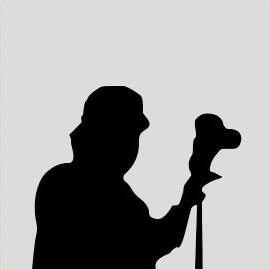2 Likes
Collégiale Notre-Dame en Vaux de Châlons-en-Champagne.
Inscrite au patrimoine mondial de l'UNESCO dans le cadre des Chemins de Saint-Jacques-de-Compostelle en France,
Notre-Dame-en-Vaux était une collégiale, c'est-à-dire qu'elle abritait une communauté de chanoines.
L'église actuelle fut commencée avant 1157, en remplacement d'un édifice antérieur qui s'était écroulé.
Sa reconstruction était achevée en 1217. Commencée en style "de transition" (intermédiaire entre le roman et le gothique),
elle fut terminée en gothique.
On y trouve un beau chevet avec abside gothique flanquée de deux tours romanes (influence de la cathédrale de Toul),
mais aussi d'admirables verrières du XVIe siècle. Il s'y trouve également un des plus grands carillons d'Europe,
composé de 56 cloches et datant du XIXe siècle.
Jusqu'à la Révolution, qui mutila son portail sud de style renaissance, elle possédait 4 flèches (voire 5, si on compte la
petite de la croisée du transept). 3 furent rasées à la Révolution pour récupérer leur plomb à des fins militaires ;
une fut reconstruite à partir de 1852 par l'abbé Champenois, les deux autres attendent toujours de l'être. Au Moyen Âge,
elle possédait une relique vénérable qui attirait beaucoup de pèlerins et fit sa gloire : la relique du saint-Nombril du Christ,
détruite en 1707 par l'évêque de Châlons.
posé de 56 cloches et datant du XIXe siècle.
Jusqu'à la Révolution, qui mutila son portail sud de style renaissance, elle possédait 4 flèches (voire 5, si on compte la petite
de la croisée du transept). 3 furent rasées à la Révolution pour récupérer leur plomb à des fins militaires ; une fut reconstruite
à partir de 1852 par l'abbé Champenois, les deux autres attendent toujours de l'être. Au Moyen Âge, elle possédait une relique
vénérable qui attirait beaucoup de pèlerins et fit sa gloire : la relique du saint-Nombril du Christ, détruite en 1707 par l'évêque
de Châlons.
...





France is affectionately referred to as "the Hexagon" for its overall shape.French history goes back to the Gauls, a Celtic tribe which inhabited the area circa 300BC until being conquered by Julius Caesar.The Franks were the first tribe to adopt Catholic Christianity after the Roman Empire collapsed. France became an independent location in the Treaty of Verdun in (843 AD), which divided up Charlemagne's Carolingian Empire into several portions.The French monarchy reached its zenith during the reign of Louis XIV, the Sun King, who stood for seventy-two years as the Monarch of all Monarchs. His palace of Versailles and its Hall of Mirrors are a splendid treasure-trove of Baroque art.The French Revolution ended the rule of the monarchy with the motto "Liberty, Equality, Fraternity!" On July 14th, 1789 angry mobs stormed La Bastille prison and began the Revolution in which Louis XVI, his wife Marie-Antoinette and thousands of others met the guillotine.One decade after the revolution, Napolean Bonaparte seized control of the Republic and named himself Emperor. His armies conquered most of Europe and his Napoleonic Code became a lasting legal foundation for concepts of personal status and property.During the period of colonization France controlled the largest empire in the world, second only to Britain.France is one of the founding members of the European Union and the United Nations, as well as one of the nuclear armed nations of the world.Text by Steve Smith.